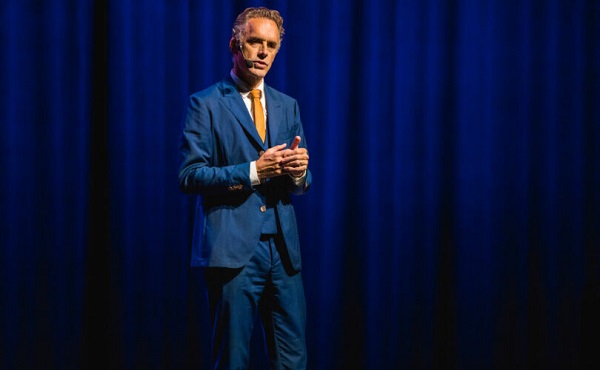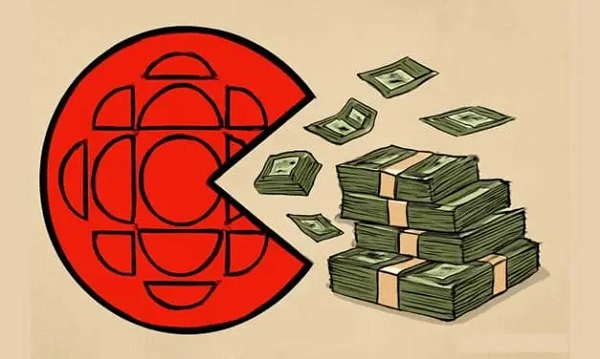Opinion
Exciting that Red Deer may take the lead in Solar Power discussions on March 6 2017
I am excited to hear that the city of Red Deer is considering a plan to retrofit homes to solar energy. To fully outfit a home with solar energy would cost 25,000 dollars and at 3% interest it would cost $242 per month for 10 years. The city would consider loaning the money, putting a lien on your home, and collect it back through property taxes, for example. The debt stays with the home. Your electric bills go down, your property value goes up.
The city puts in utilities sidewalks etc. that we all pay for through our property taxes. New builds would be less expensive and would be easier and the city should consider the option at all times.
Another benefit to the city as a whole would be eco-friendly, would create jobs and could take advantage of economy of scale. Taking the lead in this could push other levels of governments to participate. I am glad to see the city addressing this issue on March 6 2017. I would suggest everyone offer communication to our city. You could e-mail legislative [email protected]
Past blogs are included;
May I ask a stupid question or 2 or 3 or 11?
I hear a lot about solar panels, solar power, solar heating, and passive solar heating.
Solar panels produce electricity and could charge batteries for later use or to keep batteries charged. Electric cars and busses run on batteries that get recharged, after use, when they are plugged in. Why do we not see solar panels on electric cars and busses? You plug them in power supplies that are often times coal generated to charge up your batteries. Would the solar panels on the cars and busses lessen the time and power requirements? A bus can be 40 feet long and over 8 feet wide, offering a large roof area for solar panels.
We talk about solar panels being less efficient in the cold, under snow and ice. Why not incorporate solar heating panels to keep your solar panels warm, and ice and snow free?
Could we put a magnifying glass or lens in front of a solar panel to increase light intensity?
What about a mirror behind the solar panel?
How about a parabolic mirror?
What is that, you ask?
A parabolic mirror is a curved mirror, like a satellite dish.
According to Wikipedia;
“The parabolic reflector functions due to the geometric properties of the paraboloidal shape: any incoming ray that is parallel to the axis of the dish will be reflected to a central point, or “focus”. Because many types of energy can be reflected in this way, parabolic reflectors can be used to collect and concentrate energy entering the reflector at a particular angle.”
We have all seen satellite dishes being used for tv signals focused on receiver so why not use a polished reflective satellite dish to focus sunlight on a solar receiver, possibly a solar panel or a solar sphere? Like the TV dishes they started huge and got smaller and more efficient.
Could we not place a magnifying lens in front, and also incorporate passive solar heating for year round use? Could we not use a portion of the power created to ensure optimal aiming?
Solar panels are getting more powerful, more efficient and less expensive. Instead of spending billions on big projects could we not focus on smaller ones?
These may be stupid questions, but I just had to ask.
Is it time to have or implement a National Electrical Strategy?
I live in Red Deer, a small city in Central Alberta. My electrical bill last month was $95.
The average household, according to Google, in Canada uses 972 KWHs monthly, but I used 848 KWHs last month, so if I had been an average user then my bill would have been $109.
My electrical bill shows that my electrical use cost only $32.40 while administration cost $6.99, distribution cost $25.90 transmission fees cost $23.86, include access fees, rate riders and balancing pool allocations and GST and my bill came to $95.
Talk of carbon taxes, green energy would increase my energy costs. Fine, increasing my energy costs by 10% would mean an increase of only $3.24 because all the other charges should not go up. Changing fuel or supply should not affect administrators, power lines, poles or switches.
I started requesting electric bills from homes in other parts of Alberta and the costs varied from 3.75/ kwh to 5.99/kwh and the other costs varied in name and amount for varying total costs per kwh from 11.7 to 15.75/kwh. So at 848 kwh my bill would go from $95 up to $133.56 depending on location.
Alberta is deregulated and you have options of providers. Floating and fixed rates, but the other fees are always added.
A home in Vancouver showed an average 11.37/kwh so my bill would be $96.50, very similar to my Alberta bill. Vancouver is vastly different and denser market. Vancouver has 5,249 people per km. or 2100 homes per square km.
Alberta has a population of 4,252,879 people in 640,081.87 sq. kms. For a density of 6.7 people per square km. or 2.7 homes per square km. So you would think that the costs would be astronomically higher to compensate for the vast distances, and the increased wiring, poles, and installation of such, but apparently not.
So I thought about Ontario. Population of 13,982.984 in 908,607 square kms of land. 15.4 people or 6.2 homes per square kms. More than twice the density of Alberta. The transmission and distribution costs should be equal to or less than sparsely populated Alberta. I started requesting power bills from home owners in Ontario, especially in rural Ontario.
The first bill came from Winchester, 40 kms. from Ottawa. It showed a monthly usage of 661.24 KWHs. Energy costs varied from 8.7/kwh of low peak to 18/kwh during high peak for energy cost of $79.06. Add in delivery charge of $65.41, regulatory fees and HST and the bill comes to $164.96. Or 25/kwh. My current bill would now be $211.55 if I lived in Winchester.
The second bill came from a family outside Chesterville. It showed higher usage, perhaps because of location, age of appliances or lifestyle. Energy use of 1281 KWHs for a bill of $278.93 or 22/kwh. My bill would then be $184.65 if I lived outside Chesterville.
Albertans get their power from natural gas (44%), coal (39%) and even hydro (6%) while Ontario get their power from Nuclear, (66%) and Hydro (22%) But in Alberta, we are expecting increases in our power bills due to carbon taxes, green initiatives and the new power lines being built to the southern border. Paid for by current users to provide power south of the border. Ontario has some similar changes and challenges ahead to incur expectations of increased costs. Is this proper?
Alberta is only 70% the size of Ontario, our population is only 30% of Ontario, yet Alberta power bills are substantially lower. Capitalists will tell you that larger markets like Ontario, means lower costs, as one would also expect with increased density as in this case, Ontario.
Alberta deregulated the electrical sector increasing competition. Would that help or exasperate the problem in Ontario? Should the vast majority of urban homes subsidize the rural users? Should a standard rate be applied to all in Ontario?
To recap with averages of 972 KWHs per home per month it would cost $110.61 in Vancouver B.C., $108.90 in Red Deer Ab., $242.48 in Winchester Ont. And $211.65 in Chesterville Ont. Definitely not a level playing field, is it?
Is it time for the Federal Government to create a National Electrical Strategy? We could at least study on it.
What do you think?
Censorship Industrial Complex
Jordan Peterson reveals DEI ‘expert’ serving as his ‘re-education coach’ for opposing LGBT agenda

From LifeSiteNews
The Ontario College of Psychologists has selected Jordan Peterson’s “re-education coach” for having publicly opposed the LGBT agenda.
In a June 16 op-ed published by the National Post, Canadian psychologist Dr. Jordan Peterson revealed that U.K. citizen Harry Cayton will guide him through the mandatory training.
“In the last week … the College has re-established contact, after months of unnecessary delay, which occurred in violation of their own order and guidelines. They have made me an entirely new offer, all the while insisting that this was their intent all along, which it most clearly was not,” Peterson said.
“All they really want, it turns out, is one two-hour session, which will not involve any ‘social media’ training,” he further explained. “This will be conducted by a man — one Harry Cayton — a citizen of the U.K., who is neither social media expert, according to the College and is definitely not a psychologist.”
Harry Cayton, a supposed expert on “professional regulation and governance,” is known professionally for promoting Diversity, Equity, and Inclusion (DEI) initiatives.
In 2021, he was appointed to conduct an independent review of the British Columbia Law Society’s governance structure, specifically examining how it supports DEI goals.
Additionally, in 2022, while appearing on Ascend Radio’s podcast, Cayton argued there should be more DEI regulations in professional associations.
Peterson has promised to make the details of his “re-education” public, questioning why the College wishes to hide what Cayton plans to discuss with him.
“If I am the intransigent fool, and he is the wizard to set things right, why not bless everyone interested with his wisdom, and allow them to participate in the restructuring of my psyche and eventual enlightening? Why the concern with confidentiality?” he asked.
Peterson also explained that he will publicize the training “so that people who are interested can decide for themselves what is going on.”
In January 2024, Peterson lost his appeal of the board’s decision to compel him to undergo mandatory re-education, meaning that he must attend the training or risk losing his license to practice psychology in Ontario.
Peterson also revealed that his “legal options have” now “been exhausted” after Ontario’s highest court rejected his appeal of the College’s 2022 ruling that his public political statements ran afoul of the administrative board’s rules and that he must therefore submit to, and personally pay for, a “coaching program” on professionalism.
Peterson is a widely-known critic of Canada’s increasingly totalitarian government. He has also spoken frequently on the need for young men to accept and take on personal responsibility. While he has seemingly inspired others to explore Christianity, he has not yet espoused a personal belief in any religion, though he affirmed his wife Tammy in her decision to convert to Catholicism in 2024.
Business
Rhetoric—not evidence—continues to dominate climate debate and policy

From the Fraser Institute
Myths, fallacies and ideological rhetoric continue to dominate the climate policy discussion, leading to costly and ineffective government policies,
according to a new study published today by the Fraser Institute, an independent, nonpartisan Canadian public policy think-tank.
“When considering climate policies, it’s important to understand what the science and analysis actually show instead of what the climate alarmists believe to be true,” said Kenneth P. Green, Fraser Institute senior fellow and author of Four Climate Fallacies.
The study dispels several myths about climate change and popular—but ineffective—emission reduction policies, specifically:
• Capitalism causes climate change: In fact, according to several environment/climate indices and the Fraser Institute’s annual Economic Freedom of the World Index, the more economically free a country is, the more effective it is at protecting its environment and combatting climate change.
• Even small-emitting countries can do their part to fight climate change: Even if Canada reduced its greenhouse gas emissions to zero, there would be
little to no measurable impact in global emissions, and it distracts people from the main drivers of emissions, which are China, India and the developing
world.
• Vehicle electrification will reduce climate risk and clean the air: Research has shown that while EVs can reduce GHG emissions when powered with
low-GHG energy, they often are not, and further, have offsetting environmental harms, reducing net environmental/climate benefits.
• Carbon capture and storage is a viable strategy to combat climate change: While effective at a small scale, the benefits of carbon capture and
storage to reduce global greenhouse gas emissions on a massive scale are limited and questionable.
“Citizens and their governments around the world need to be guided by scientific evidence when it comes to what climate policies make the most sense,” Green said.
“Unfortunately, the climate policy debate is too often dominated by myths, fallacies and false claims by activists and alarmists, with costly and ineffective results.”

Kenneth P. Green
Senior Fellow, Fraser Institute
-

 Energy2 days ago
Energy2 days agoKananaskis G7 meeting the right setting for U.S. and Canada to reassert energy ties
-

 Business2 days ago
Business2 days agoCarney’s Honeymoon Phase Enters a ‘Make-or-Break’ Week
-

 Alberta2 days ago
Alberta2 days agoAlberta announces citizens will have to pay for their COVID shots
-

 conflict2 days ago
conflict2 days agoIsrael bombs Iranian state TV while live on air
-

 Business2 days ago
Business2 days agoCarney praises Trump’s world ‘leadership’ at G7 meeting in Canada
-

 Business1 day ago
Business1 day agoThe CBC is a government-funded giant no one watches
-

 conflict2 days ago
conflict2 days agoTrump leaves G7 early after urging evacuation of Tehran
-

 conflict1 day ago
conflict1 day agoMiddle East clash sends oil prices soaring






